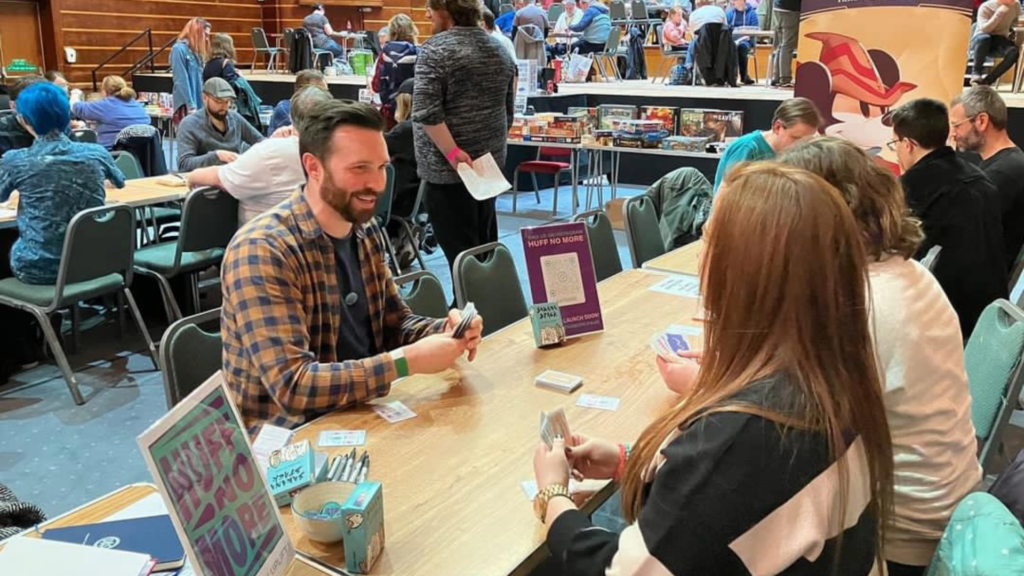In the world of indie board games, standing out from the crowd is one of the biggest challenges creators face. With platforms like Kickstarter flooded with new projects every day, how do you make sure your passion project gets the attention it deserves?
Today I’m chatting with Lee Winder, the founder of Rising Dice, a creative studio that’s doing something quite remarkable in our industry. Lee offers professional photography services to board game creators completely free of charge, helping indie designers showcase their games in ways that truly capture the imagination. We’ll explore why quality photography matters so much, how Lee approaches each project, and what drives someone to dedicate their skills to supporting the indie gaming community.

Joe: Heya, welcome to the What If blog. It’s great to have you here. Can you start by introducing yourself and let us know what brings you to the world of board games?
Lee: Hey Joe, thanks for having me. My name’s Lee Winder (if you’re not sure, it’s pronounced wine-der), the founder and photographer for Rising Dice, a creative studio specialising in pro-bono photography for the board game industry.
I’ve been a hobbyist photographer for many years, and played board games pretty much for the same length of time. But it was when I picked up a copy of Genshin Tarot and, blown away by how good that game looked, I wondered if I could start to help designers and creators connect with their audience through striking, narrative images that maybe they wouldn’t otherwise have access to. That’s what Rising Dice is all about and how I ended up here today!
Joe: Your work really speaks for itself. I was wowed by the photography you did on Muster Raise the Banners recently.
One thing that strikes me as unique about your photography is the attention to detail. When you get a new game to shoot, what’s your process?
Lee: Thanks – that one was a fantastic project to collaborate on, the game really lent itself to having pictures that popped as you looked at them.
My process is built around understanding and diving into the game’s world, regardless of whether it’s to show the game in action, something more thematic or a pack shot of the game’s components. I like to really understand the game, playing it multiple times to pull out the key mechanical and emotional moments that will resonate with players. That’s certainly a perk of the job, but it’s also a vital part of the process to ensure we’re authentically representing the play experience.
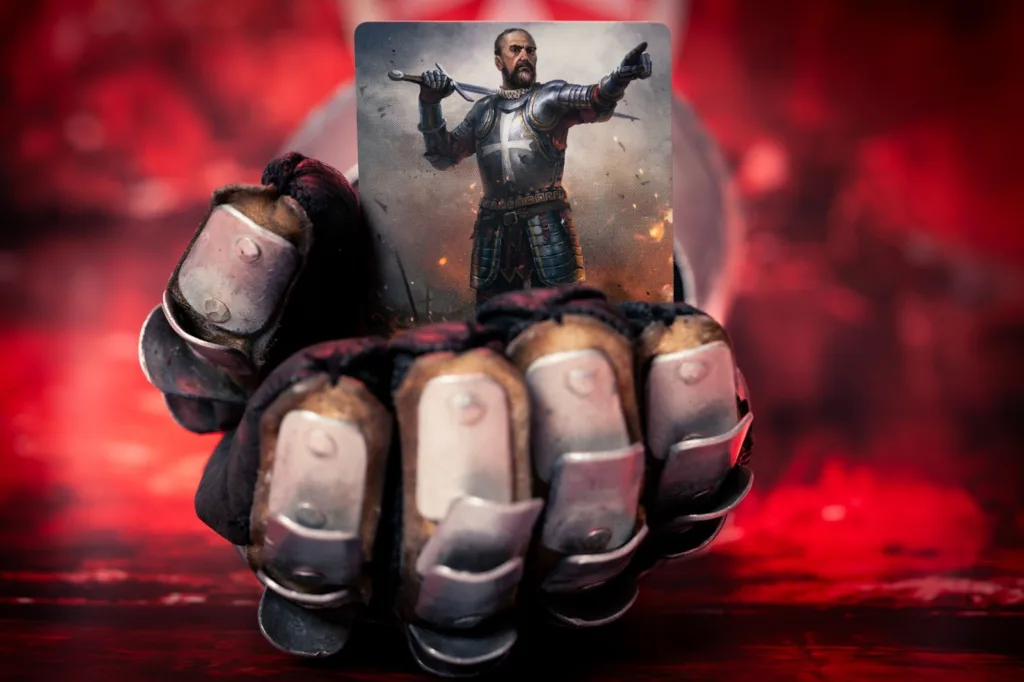
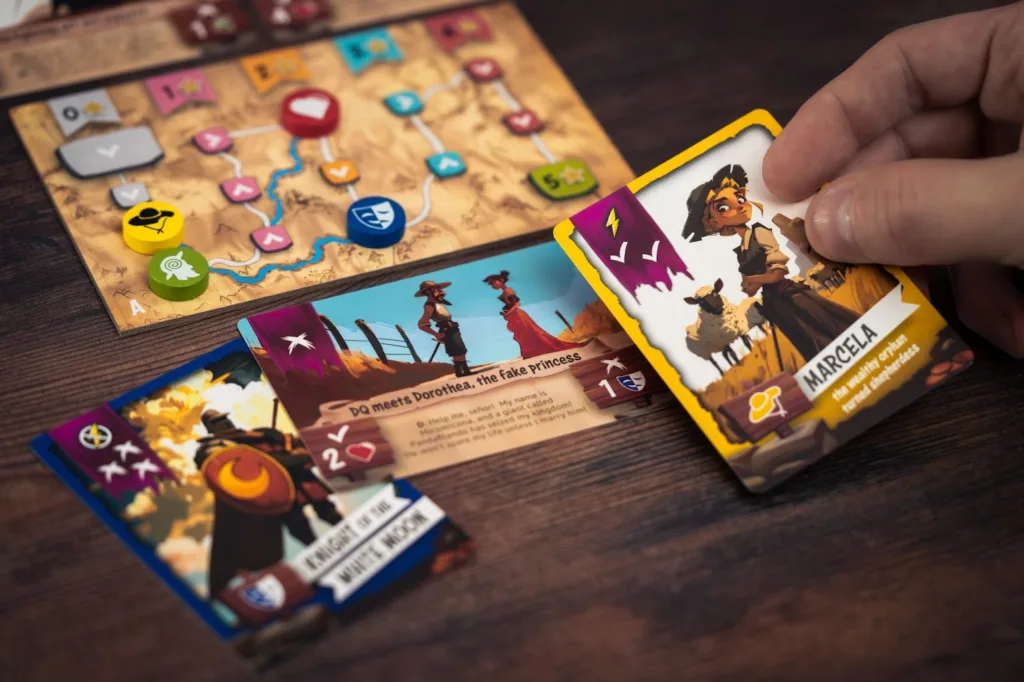
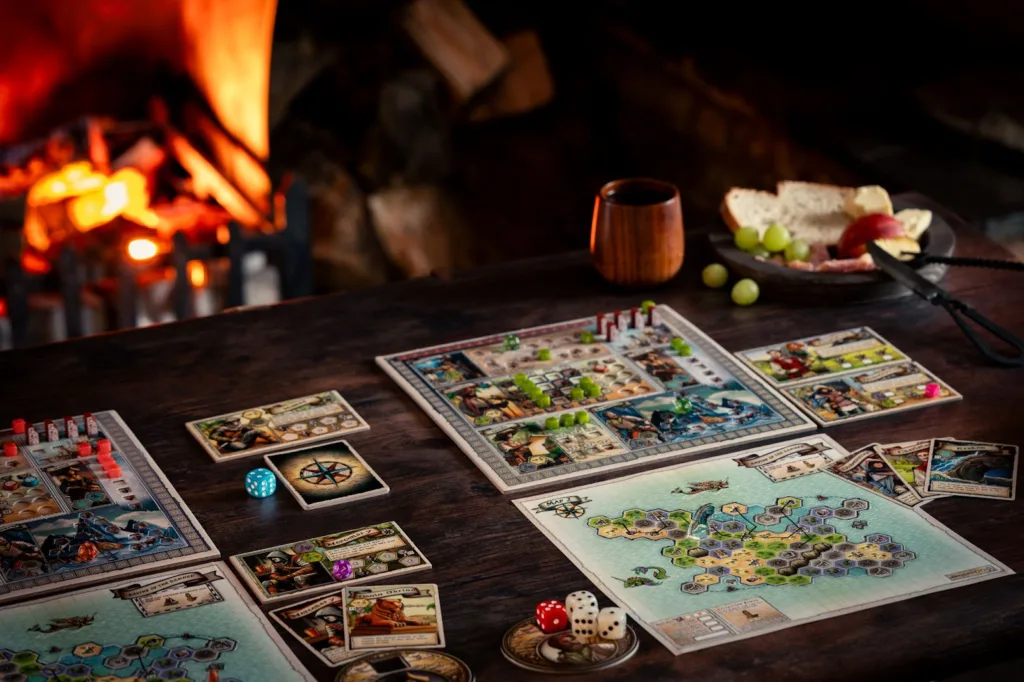
For thematic photography, I’ll build a scene around the game based on how it plays or its general theme, to tell a story and create a powerful atmosphere. The goal there is to create a single image that communicates the entire feeling of the game before a player even reads the rulebook.
Joe: Interesting, learning the games looks to be a key part of the process and now you’ve explained it, it helps me understand why your work is so good!
Leaving your process for a moment, I’d love to find out why you are doing this? With the skills you have, you could be charging designers for your work, but you’re not, and you’re seeking out indie games designers to work for. That all feels like a very conscious choice – I wonder if you might explore that with us?
Lee: That’s a great question and gets to the heart of what I’m trying to do with Rising Dice.
It was a conscious decision to offer my services pro-bono. I already have a day job that’s quite demanding, and photography has always been a creative outlet for me. I didn’t want to take away my enjoyment of that by turning it into a business when I had the opportunity to work with fantastic creators or designers and get to be a small part of their story.
As for working mainly with indie and smaller game studios, that evolved naturally. Speaking to people at expos and shows, hearing their stories and seeing their passion, it can be pretty infectious. They often have unique journeys and genuine excitement for what they’re building, and it’s hard not to want to be part of that!
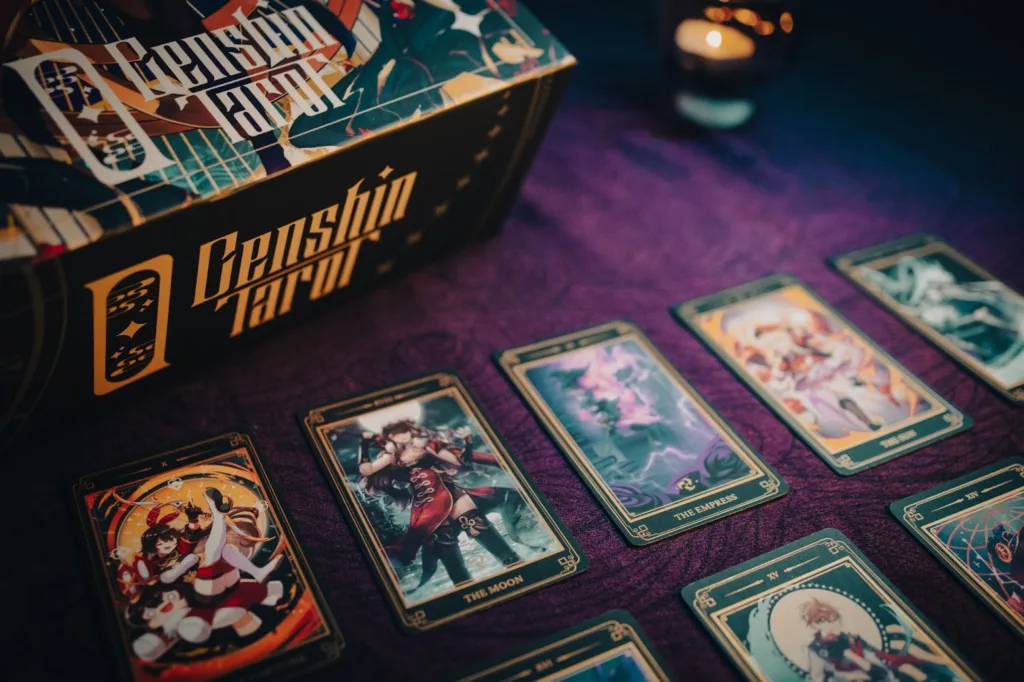
Making a board game is expensive, no matter who you are. Even success on Kickstarter doesn’t come for free, you have to work damn hard before you even open a campaign. So if I can be even a small part of helping someone’s project succeed, one they have such passion and love for, that brings something different or fun to our hobby or someone in it, then why wouldn’t I.
Joe: That’s quite brilliant Lee – it mirrors much of the rationale for the support I try to offer in the indie space too.
With so many indie games competing for attention on platforms like Kickstarter, how important do you think quality photography really is in helping a project stand out from the crowd?
Lee: It’s absolutely critical. In a crowded market like Kickstarter, you have seconds to capture someone’s attention, and professional photography is one of your most powerful tools for doing that. It goes beyond just showing what’s in the box, it’s about communicating the player experience and building a narrative before a single component is punched.
That kind of authenticity builds confidence that something will come out of the campaign which can really help someone decide if they want to back the project or not.
It allows players to get a real sense of what the game is. Not just the artwork, but the physicality of it, the weight of the components, the texture of the cards, how good it looks laid out on a table. It helps people picture playing it, which for a game, is pretty much the aim of any type of marketing.
But most importantly, it shows that the game is real. In-game shots, especially with cards, tokens or dice in hand, show that it’s not just concept art or a vague idea, it’s something that exists, that people can actually play. That kind of authenticity builds confidence that something will come out of the campaign which can really help someone decide if they want to back the project or not.
Joe: I hadn’t thought about that authenticity before, what you say is spot on. I think that photography beats something like a high quality render (although those have their place).
I wonder if you might be able to offer some advice or expertise around photography. Some tips to help those of us who are working with prototypes to make those photos stand out a little more. Many indies are using those sorts of shots to gain traction on social media to help build support for our games, so your advice would be amazing.
Lee: Absolutely. For designers taking their own shots, my biggest piece of advice is to master your lighting. A large window with soft, indirect natural light can do 90% of the work for you, creating flattering light that makes components pop without harsh shadows.
For example, the Sakana Stack photos were all shot in natural light, which matched the game’s style perfectly. That soft, natural light really suited the style and colours of the cards.
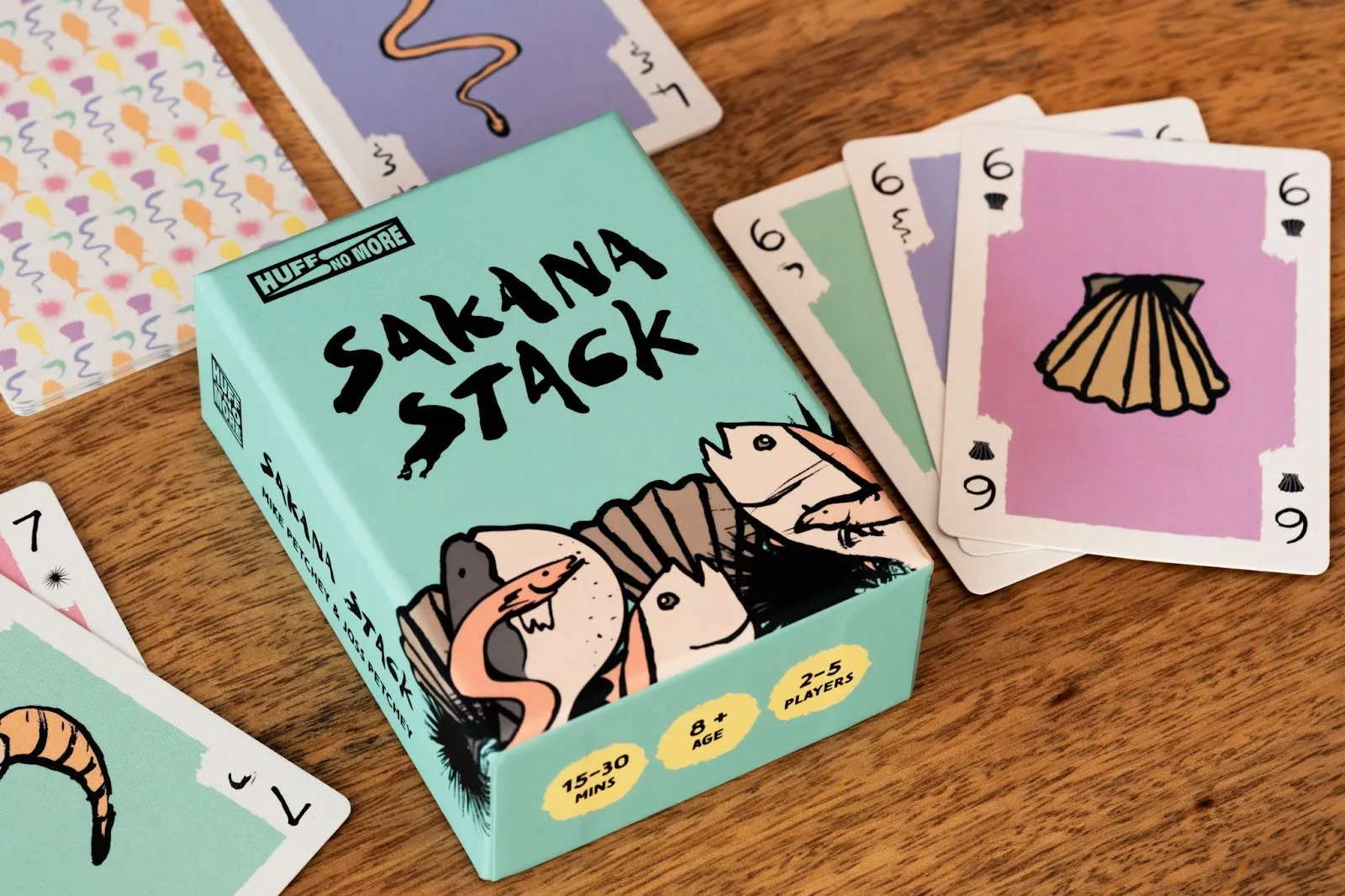
Second, focus on telling a story with a consistent style. Use the same style or theme across a set of photos, one that evolves over time, not picture by picture. Think about the journey you want to take your audience on.
Muster: Raise the Banners is a good example of this where I started with a focus on the bold colours, moved to gameplay shots, then focused on characters. Over time, this tells an interesting story and takes a potential player through the narrative of the game.
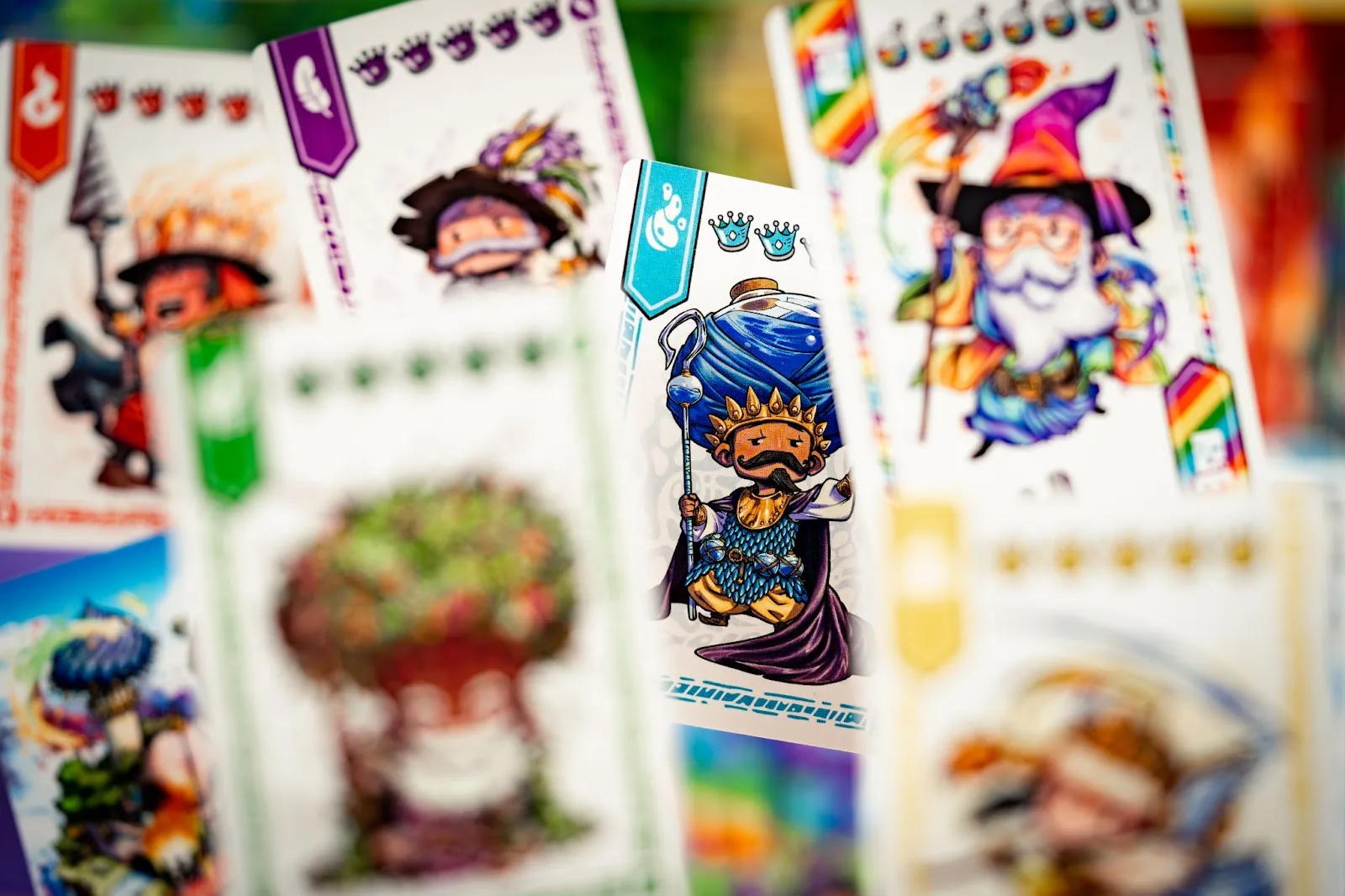
Finally, don’t worry about professional gear at the start. With care and good lighting, a phone camera can do a brilliant job. Professional setups add polish later, but early on, it’s all about showing your passion and giving people a feel for what you’re creating.
Joe: This is gold dust Lee. Thank you for sharing it with us.
Last question for you, if people want to get in touch and get your camera on their work, what should they do?
Lee: The easiest way to get in touch is by dropping me a line at hello@risingdice.com, or sending a message on Instagram via @risingdice.
You can also visit www.risingdice.com to learn more about how I work and browse our portfolio.
I always love discovering what games are out there, so if anyone is planning a crowdfunding campaign, looking for marketing imagery, or simply wants to share their game with a wider audience, I’d be excited to chat about how we could collaborate.
Thanks so much for having me Joe, it’s been a pleasure.
What a brilliant conversation that was. Lee’s approach to supporting indie creators really resonates with me, and I think his insights about the power of quality photography will be valuable for anyone working on their own game project. The idea that a single image can communicate the entire feeling of a game before someone even opens the rulebook is something worth remembering.
If you’re an indie designer reading this, I’d encourage you to reach out to Lee. His work speaks for itself, and the fact that he offers these services pro bono shows just how much he cares about our community. Whether you’re planning a crowdfunding campaign or just want to share your game with the world, having someone like Lee in your corner could make all the difference.


